
Transmission in cycling
Transmission in cycling.
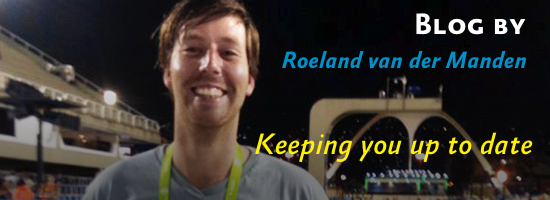
When you watch cycling every now and than you might have asked yourself the question how is it possible to follow a cycling tour over 180 kilometers live on television. On several motorcycles and helicopters.
Well, since I have seen it all from close by I can tell that it takes more than a smile. It involves a lot of technology, effort and not to forget money.
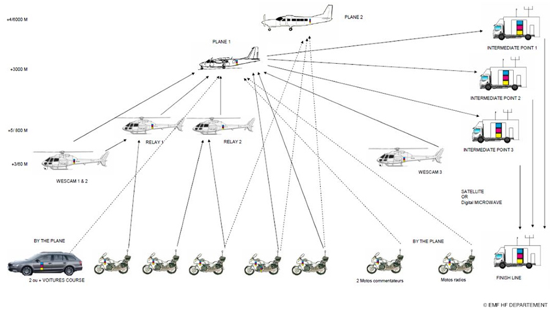
On every transmission similar to a cycling tour, think of marathons for example, there is an airplane full of technology flying in circles above the riders. This airplane is equipped with about 7 small satellites, which can move all around.
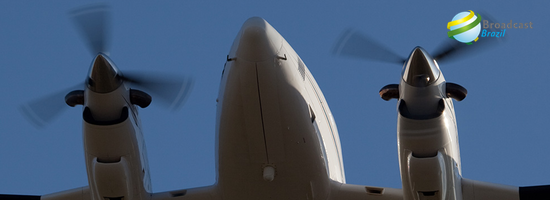
This system is similar to the way a camera is attached on a drone. So the satellites are connected to a sort of gimbal. On the ground next to the OB-van is a large crane positioned with two dishes on it.
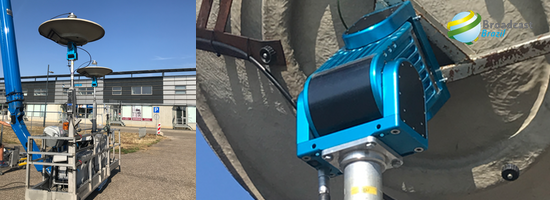
These are the dishes that receive the signal from the plane. The dishes are also connected to “ gimbals ” so they can be positioned perfectly to get the best reception from the plane. So the gimbals on the plane and on the crane are always in contact with each other and they position automatically to get the best reception.
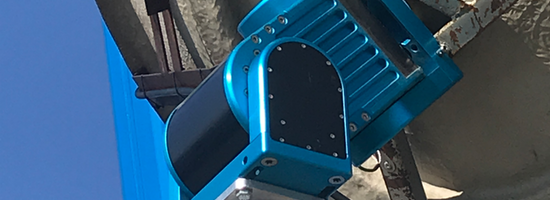
A Swiss engineer invented this system and it is very precise. It is so precise that armies around the world would like to use it but he doesn’t sell his idea. He is the only one making this system to keep 100% control of his product.
The receiving part has two satellites in case there are more aircrafts like at the three big rounds (Tour de France, Vuelta da Espana and Giro da Italia). When there are smaller rounds than the second satellite is used as backup.
Inside the aircraft there is much equipment and one technician to monitor all these systems).
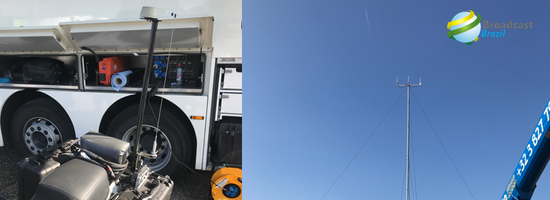
The other important part of the transmission is the motorcycle. They register all the action on the road being close to the riders. There is a driver and a cameraman. The camera is connected to a box on the motor that is connected to an antenna on the back of the motorbike. This antenna sends it signal straight to the airplane. So the airplane gets all the signals from the helicopters and motorcycles at the same time. The cameraman advises the director when there are obstacles that might interfere the signal, a bridge for example. Sometimes there is no loss of signal but this depends all on the position of the plane and the motorcycle.
The airplane circles all the time in the same direction. Like this is it easier to create an area where the signal is good enough to be transmitted without hick-ups.
When the plane is circling it creates an area in the shape of a cone. As long as the helicopter(s) and motorcycles are within this “ cone” the signal should be of good quality.
There is a separate transmission for the communication between the director in the OB-van and the cameraman on the motor and helicopter. This is a large antenna and this reaches up to a couple of hundred meters. Also the tally signal, a red light turns on in the viewfinder of the camera so the cameraman knows when that camera is online, goes through this antenna.
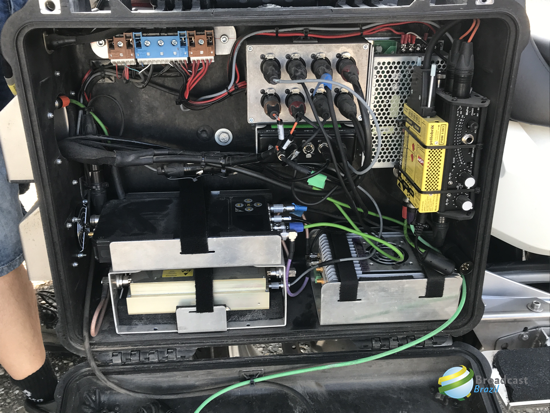
Some transmissions are very hard to realize. Imagine a mountain stage in the Tour de France for example when there is no direct line of sight between the satellites next to the OB-van and the airplane because of the mountains in between. In that case, they double the whole construction. One set of satellite dishes at the start, and one at the finish line. And even like that there are some places where that is not enough, and which requires a third location. Than they consider an uplink truck on a mountaintop some between the start and finish to get the signal up in the air. At the Tour de France they sometimes get an SNG truck up to a ski station to get the job done.
video:
Roeland van der Manden
More info you can find on his LinkedIn: www.linkedin.com/pub/roeland-van-der-manden , Check his website or follow him on Twitter AmsterdamProductions
Rodolfo Souto , being a tech guy at TV Globo
Rodolfo , being a tech guy at TV Globo
We met Rodolfo Souto some years ago at the Formula 1 at Interlagos, São Paulo. He was responsible for some cabling between the international Broadcasters and the Host TV Globo. In their booth at the TV compound we found Rodolfo with his head in a rack. There was a ‘small problem’ in which he had to solve’ he said. The next morning we spoke to him again, he told us he re-cabled the whole rack overnight to solve the problem. A Die-Hard technician this Rodolfo. And…. he spoke very good english. so we invited him for our blog.
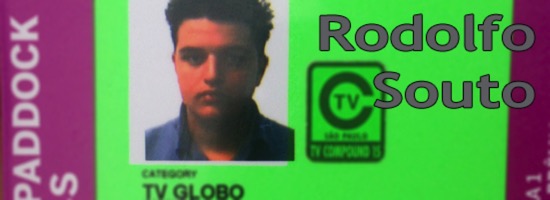
BB: Can you tell us about yourself and your job at - External events São Paulo?
Rodolfo: My Name is Rodolfo, and I`m a Technician of TV System. I am working for TV Globo since December 2006, almost 10 years now.
BB: Tell us about the company TV Globo - External events São Paulo and how long does TV Globo - External events São Paulo exist?
Rodolfo: The External team of Events in São Paulo exists since 1975 i think. The first soccer game that the External events team broadcasted was with only 3 cameras, the signal output were a Analog MicroWave route between the Soccer-Stadium and TV Globo in São Paulo. The guys that worked on that production time are still very proud of what they achieved those days.
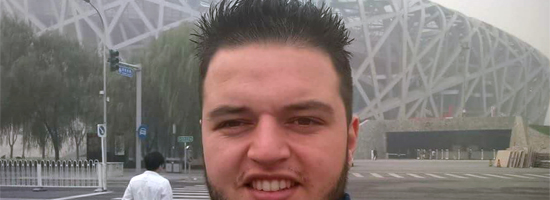
BB: Did you see a growth past years in working at international events for you in Brazil?
Rodolfo: Yes a lot. I Worked at productions like the Confederations Cup, the World Cup in 2014 and this year i will be at the Olympic Games in Rio de Janeiro. Aldo, i worked on the last 5 Formula 1 GrandPrix’s at Interloagos in Brazil.
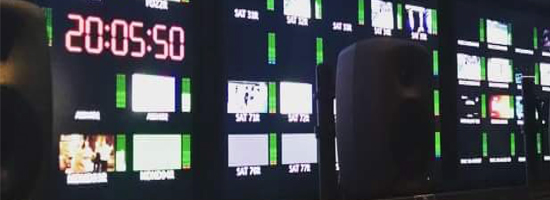
Our OBvan at TV Globo is one of the top of Latin America. I can see that after all this years Broadcast production are getting bigger and harder to achieve in the technical sense. I like that, it makes me feel good when i am working on an International Event, meeting colleagues from all over the planet and being able to talk with them.
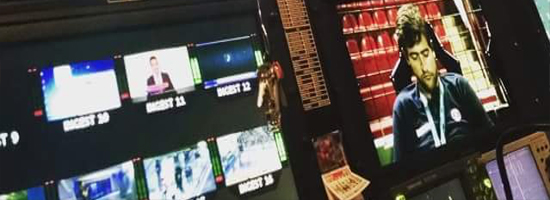
BB: What this growth ment for you and your colleagues at TV Globo - External events?
Rodolfo: TV Globo has 5 department: Rio de Janeiro, São Paulo, Belo Horizonte, Brasilia and Recife. When we have something new coming for us, normally it starts in Rio and São Paulo. So we get a lot of time to learn and understand the new technology, equipment and solutions. This is very well arranged at TV Globo.
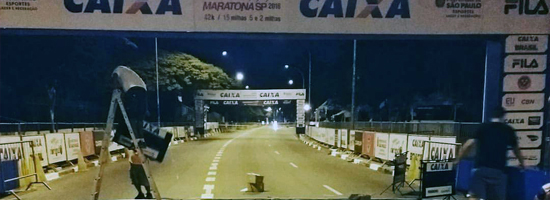
BB: Do you work besides Brazil also in other regions on the planet?
Rodolfo: Yes i did. In 2014 i went to China and also Singapore. The Brazilian national team played 2 friendly games over there. I spent even 12 days on this location job. It was amazing meet the other side of the world. In 2015 i went to Colombia to broadcast a Corinthians`s game at the Libertadores championship. That was awesome too. Speaking English is very important on International events. It was because of the english that i got this opportunity to go to China and Singapore. Knowing the english language did give me this opportunity.
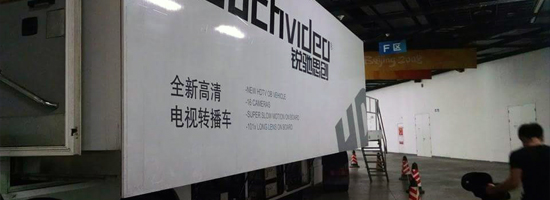
BB: On location at international events, is it difficult for you to communicate with Europeans, Americans, Australians or LATAM countries?
Rodolfo: Yes, with the LATAM’s i try to speak in Spanish but especialy with the Argentines it is hard. They speak to fast. With the Europeans it is alright, they speak very well english. It is only boring for me when they speak their own language. I do not understand anything they speak than. I worked with Australians at the World Cup in Sao Paulo, that was ok too. At the Formula 1 i speak a lot with the British guys. For me it is kind hard, to understand them. It is because i studied American English, so it is hard to get used to understand their they speak english, but in the second day everything goes already better. Every time you learn.
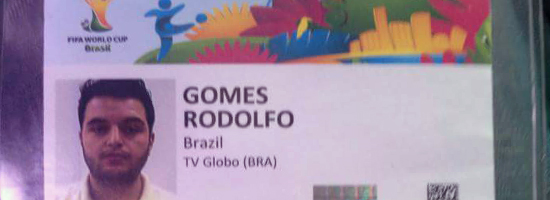
BB: How do you see your job due to Olympic Games 2016 in Brazil?
Rodolfo: It will be awesome for sure. We will never see an event like this in Brazil soon again. I am very excited to be part of this event. I will be working at Arena Corinthians in São Paulo working for the OBS. It will be unique experience, my expectation are the best you can imagine.
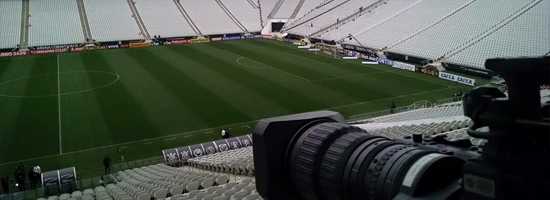
BB: Is there any surprising challenges you had at events past years?
Rodolfo: No, not really. We always have something new popping up every day in this kind of job. After some years i got used to all types of bad and good surprises. The challenges make us better and stronger. Things that i learned on International events i carry with me at every other production i do, in Brazil and abrought.
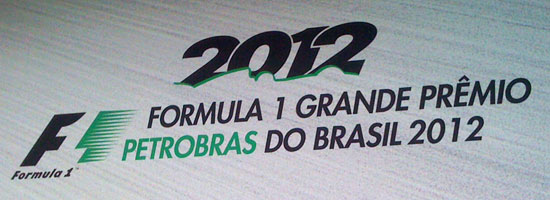
BB: What surprising challenges you think you will have at the Olympics this year?
Rodolfo: I think that we will have all the possible surprises thinkable. We will be the Host Broadcaster at the Olympic Games. All the broadcasters in the world will come to us to ask for some signals or assistance. A lot to solve and help fur sure.
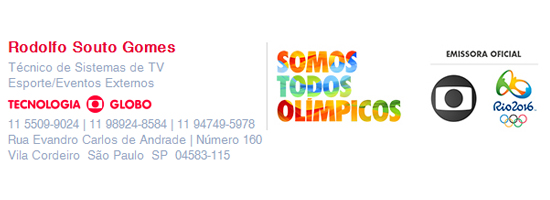
Video Olympic Games (Official Theme) - Rio 2016:
Like us if you want on Facebook, follow us on Twitter and Subscribe to our YouTube channel.
mentioned:
Globo TV: website